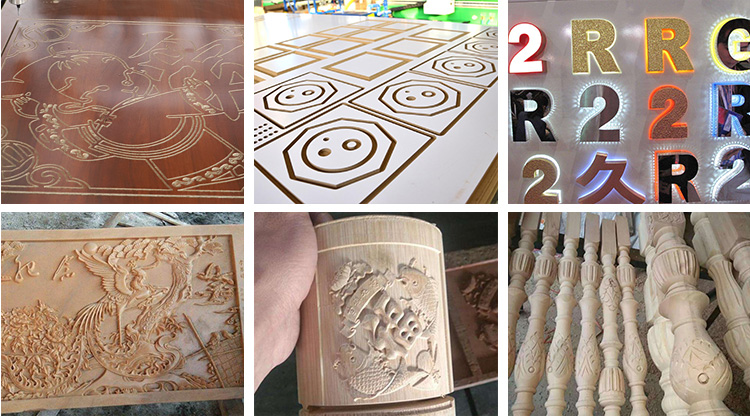A wood router is an essential tool in woodworking, used to hollow out an area in the face of a piece of wood. This versatile tool can be used for a variety of tasks, including cutting, trimming, and shaping wood. Whether you’re a professional carpenter or a DIY enthusiast, understanding how a wood router works can greatly enhance your woodworking projects. In this comprehensive guide, we will explore the mechanics, applications, and best practices for using a wood router. By the end of this article, you will have a thorough understanding of this indispensable tool and how to use it effectively.

What is a Wood Router?
A wood router is a power tool with a flat base and a rotating blade that protrudes beyond the base. The blade, or bit, is used to cut grooves, shapes, and edges into wood. Routers can be handheld or mounted to a router table, providing stability and precision for more complex tasks.
How Does a Wood Router Work?
The Mechanics
A wood router works by spinning a cutting bit at high speeds, allowing it to carve out wood with precision. The user guides the router along the wood’s surface, controlling the depth and direction of the cut. The router’s motor powers the bit, which can rotate at speeds ranging from 8,000 to 35,000 RPM (revolutions per minute).
Wood Router Bits
Different types of router bits are used for various tasks. Some common types include:
- Straight Bits: Used for making straight cuts and grooves.
- Flush Trim Bits: Used for trimming edges flush with a template or another piece of wood.
- Round-Over Bits: Used for creating rounded edges.
- Chamfer Bits: Used for cutting beveled edges.
- Rabbeting Bits: Used for cutting rabbets (notches) along the edge of a piece of wood.
Steps to Use a Wood Router
- Select the Bit: Choose the appropriate bit for your task and securely attach it to the router’s collet.
- Set the Depth: Adjust the depth of the bit to control how deep it will cut into the wood.
- Secure the Wood: Clamp the wood to a stable surface to prevent it from moving during the routing process.
- Guide the Router: Hold the router firmly and guide it along the desired path, keeping the base flat against the wood.
- Control the Speed: Adjust the router’s speed based on the type of wood and bit being used.
CNC router
A CNC wood router is a computer controlled machine to which the router or spindle mounts. The CNC Machine can be either a moving gantry style, where the table is fixed and the router spindle moves over it, or fixed bridge design, where the table moves underneath the router spindle, or hand-held style, where the operator moves the machine to the area to be cut and the machine controls the fine adjustments. CAD/CAM software programming is used to model the part that is to be created in the computer and then create a tool path for the machine to follow to cut out the part. The CNC moves along three axes (X-Y-Z). Most CNC routers have a three motor drive system utilizing either servo or stepper motors. More advanced routers use a four motor system for added speed and accuracy.
What router do I need for woodworking?
What should you look for in a router? That depends on the types of projects you’ll be working on and the specific tasks you want to accomplish with a router. Consider what features are most important to your needs – this will help you determine the required power, size, and features.
You’ll want to include the following considerations in your decision:
Power:
Depending on the nature of the task at hand, more or less power may be necessary. Check the horsepower ratings of routers to see if they meet the needs of your project. In general, larger and more demanding tasks benefit from higher HP ratings.
Variable speed control:
Look for a router that allows you to change the speed at which it operates. With the ability to adjust the speed, you can achieve maximum control and precision regardless of the material or size of the bit being used.
Depth adjustment mechanism:
Make sure that the router’s depth adjustment mechanism is sturdy and accurate. This allows you to precisely determine the required cutting depth, resulting in clean, precise cuts every time.
Ergonomics and build quality:
Consider the overall design and ergonomics of the router. Try to find a tool with an ergonomic grip and simple controls. In addition, a router built with quality materials and a solid design will serve you well for years to come.
Collet size and compatibility:
Be sure the router’s collet size is compatible with the bits you intend to use by checking the bits’ dimensions. Some routers have both a ¼” and a ½” collet, which are the two most common sizes.
Additional features:
Consider features such as dust collection capabilities, guide fence, and compatibility with router accessories or templates. These features can enhance functionality and convenience.

IGOLDEN BLOG
Thank you for visiting the iGOLDENCNC website. iGOLDENCNC is the professional supplier of CNC machinery application solution, within the business of producing and selling CNC machinery and accessories.